Tom's Guide Verdict
As budget controllers go, the Turtle Beach Rematch Wireless is a fantastic gamepad for the Nintendo Switch family. Featuring analog thumbsticks and triggers that are highly responsive and motion controls, not only does the Rematch Wireless make games feel more immersive, but it’s extremely comfortable, too. There are also two rear buttons that can be remapped on the fly. However, the controller’s finishing could have been better, there’s no vibration and it faces fierce competition from Hall Effect controllers.
Pros
- +
Comfortable and ergonomic
- +
Funky colorways
- +
Responsive analog sticks and triggers
- +
Two remappable back buttons
- +
Long battery life
Cons
- -
Finishing could have been better
- -
No Hall Effect sensors
- -
No rumble
Why you can trust Tom's Guide
The best Nintendo Switch controllers, like the Turtle Beach Rematch Wireless, can elevate your gaming experience, and they can be more comfortable than regular Joy-Cons. Turtle Beach’s offering is one such gamepad, and the brand may as well rename it to “Turtle Beach Unmatched.”
That’s because the controller costs just $59 and features responsive thumbsticks and triggers, and remappable back buttons just like on the pricier Switch Pro controller. The back buttons make games more immersive and are less tiring for your fingers and thumbs, too. The cherries on top of the cake are the controller’s funky design and long battery life.
But it isn’t without its flaws, as the controller faces fierce competition from similarly priced gamepads that feature Hall Effect sensors. Oh, and there’s no rumble or vibration either.
For the complete breakdown, read my full Turtle Beach Rematch Wireless review.
Turtle Beach Rematch Wireless review: Cheat sheet
- What is it? A budget wireless controller that’s officially licensed by Nintendo for the Switch lineup
- Who is it for? For Switch or Switch 2 owners who don’t want to spend nearly double on the Switch Pro controller
- How much does it cost? The Turtle Beach Rematch Wireless is available for $59 / £49
- What do we like? Its design is colorful, ergonomic and comfortable, its thumbsticks and triggers are responsive, and the dual back buttons are a nice touch
- What don’t we like? Finishing could have been better, there’s no rumble, and it faces fierce competition from Hall Effect controllers
Turtle Beach Rematch Wireless review: Specs
Specs | Turtle Beach Rematch Wireless |
|---|---|
Price | |
Connectivity | Bluetooth, USB-C wired |
Compatibility | Nintendo Switch 2, Nintendo Switch OLED, Nintendo Switch Lite, Nintendo Switch |
Layout | Nintendo YXBA |
Triggers | Analog |
Thumbsticks | Analog |
Dimensions | 6.5 x 5 x 2 inches |
Weight | 14.71oz |
Colors | Invincible Mario, Super Mario Star |
Battery | Rechargeable |
Battery life (rated) | 40 hours |
Turtle Beach Rematch Wireless review: The ups
From its comfortable and ergonomic design to its responsive thumbsticks and remappable back buttons, the Turtle Beach Rematch Wireless is a winner across the board.
Comfortable and ergonomic

Keeping in line with Nintendo Joy-Cons and Pro controllers, the Turtle Beach Rematch Wireless sports an asymmetrical thumbstick layout that I really like. As a PS5 owner, I much prefer the asymmetrical design of the DualSense controller to the symmetrical one.
Measuring 6.5 x 5 x 2 inches, the Rematch Wireless is extremely comfortable and ergonomic, and it enables me to game for hours on end without my hands feeling tired. Gripping it is comfortable, too, and it’s just the right weight for me, clocking in at 14.71oz — not too heavy, not too light.
Get instant access to breaking news, the hottest reviews, great deals and helpful tips.
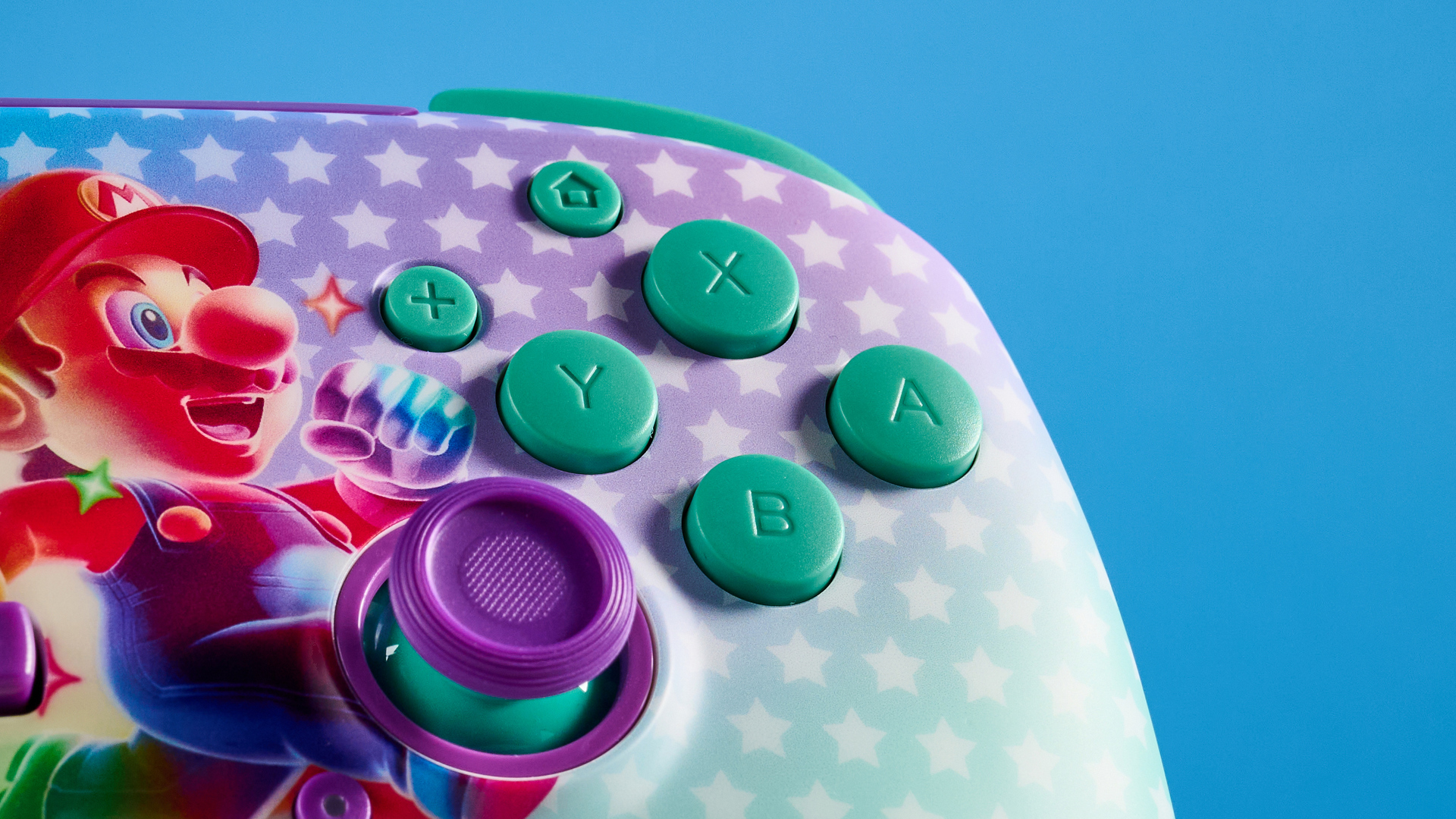
The Rematch Wireless is also built well. Its body is made of ABS plastic, but it doesn’t feel cheap — except for the finishing, which I’ll discuss later. The analog thumbsticks and triggers feel solid and sturdy, as do the YXBA buttons and the D-pad. The triggers and dual rear buttons give good tactile feedback when pressed.
Funky colorways
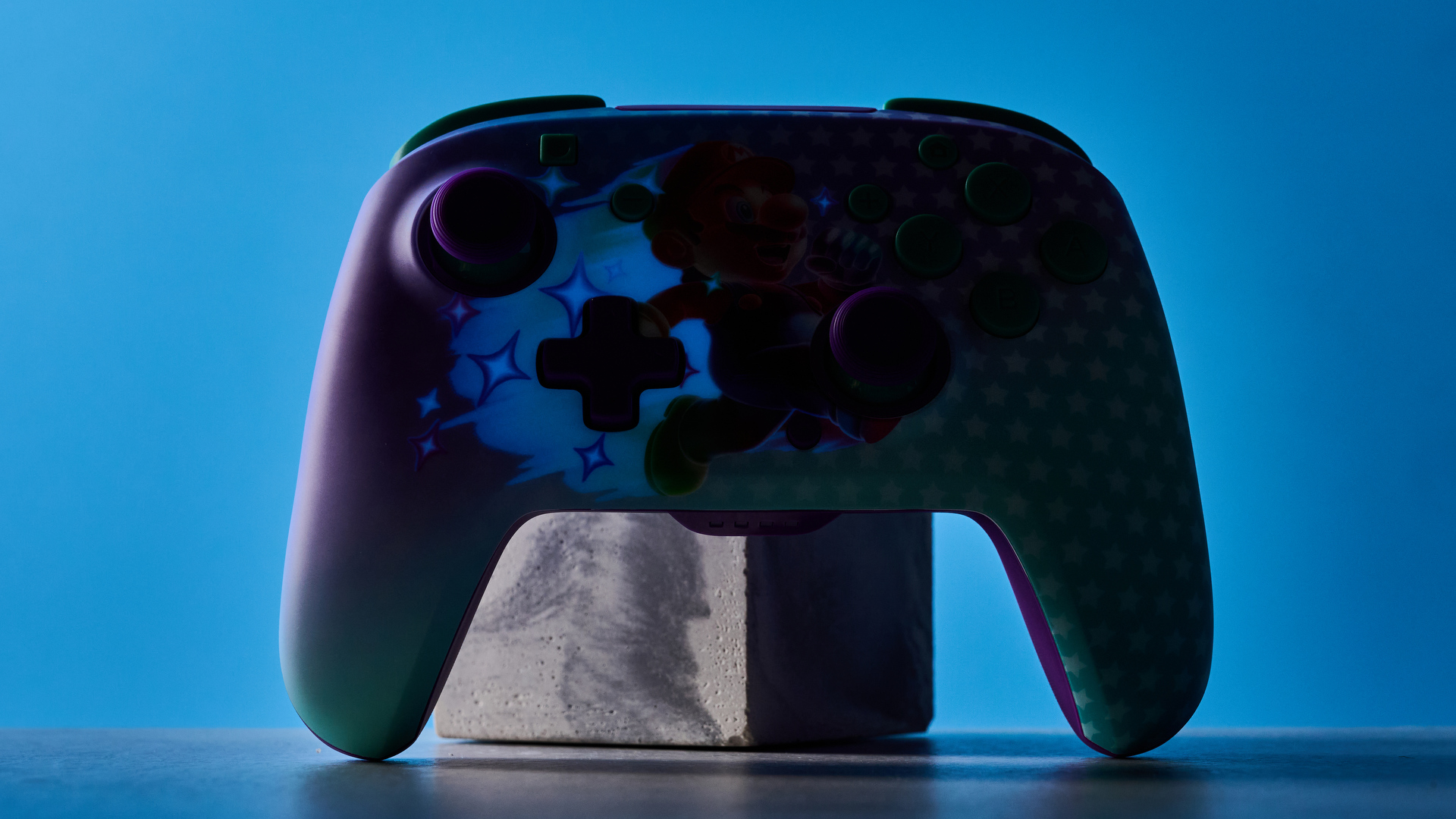
Nothing says “officially licensed by Nintendo” like slapping a picture of Mario onto a peripheral. The Turtle Beach Rematch Wireless comes in two colorways (variants, rather): Invincible Mario and Super Mario Star. I tested the former, whose design features Mario leaping through some stars against a colorful starry background — and I think it complements the whimsical and playful nature of the Nintendo Switch really well.
The Super Mario Star variant features yellow stars and stripes, and it looks nice in the photos I’ve seen. Both controllers glow in the dark, too, once they have been exposed to and soaked up some light. A little gimmicky but still funky, and I’m sure die-hard Nintendo fans will enjoy this aspect.
Responsive sticks and triggers

To test the Rematch Wireless controller, I played Mario Kart World on the Nintendo Switch 2, and The Legend of Zelda: Tears of the Kingdom, Stray and MotoGP 25 on the OG Switch. Across all titles, the controller performed extremely well. The Rematch Wireless utilizes analog thumbsticks and triggers that are highly responsive and comfortable to use.
In Mario Kart World, the controller made quick work of turning tight corners. I was able to easily navigate the chaos of a knockout race as the thumbsticks enabled me to avoid oncoming traffic and not get squashed by them. In Stray (an underrated gem, in my opinion), the triggers proved highly effective and easy to press when I made my cat make biscuits on a carpet by repeatedly pressing ZL and ZR in quick succession.
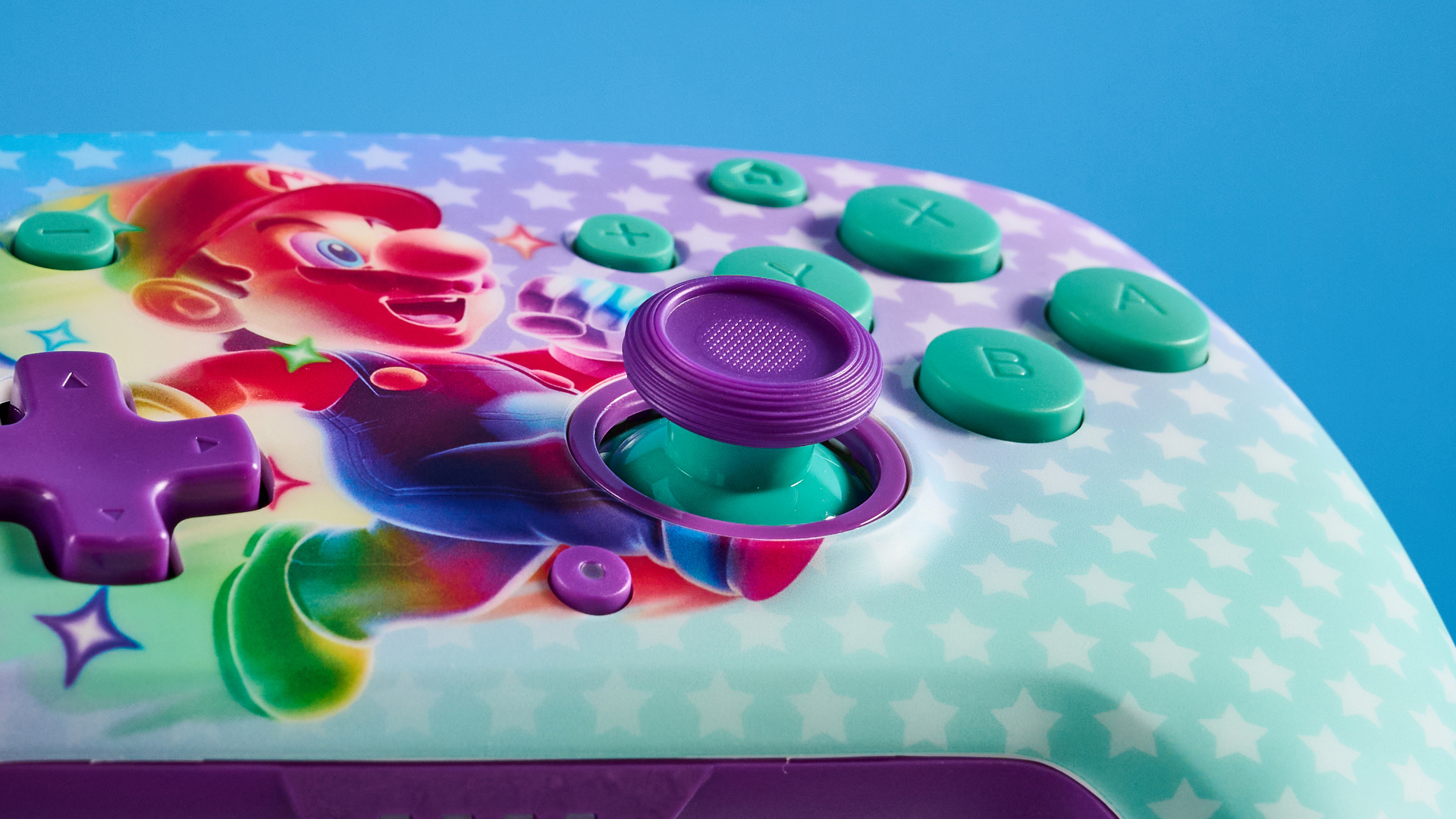
Similar to the Nintendo Switch 2 Pro controller ($84), the Rematch Wireless features motion controls, so you can immerse yourself in the game better. I used it to perform stunts with my Cow character in Mario Kart World, and it worked like a charm.
Motion controls worked really well in MotoGP 25. Combined with the rear buttons (more on that in a second), it made turning corners a lot more fun, and gaining a slipstream and overtaking NPCs at close distances more immersive.
Remappable back buttons
Similar to the new Nintendo Switch 2 Pro controller, the Turtle Beach Rematch Wireless features two back buttons located on, well, the rear, and I’m a big fan of these. While there’s no companion app for the controller, these buttons can be quickly remapped on the fly. All you need to do is hold the function button near the left thumbstick, press the rear pedal you want to remap, and then hit the button you want to reassign to it.
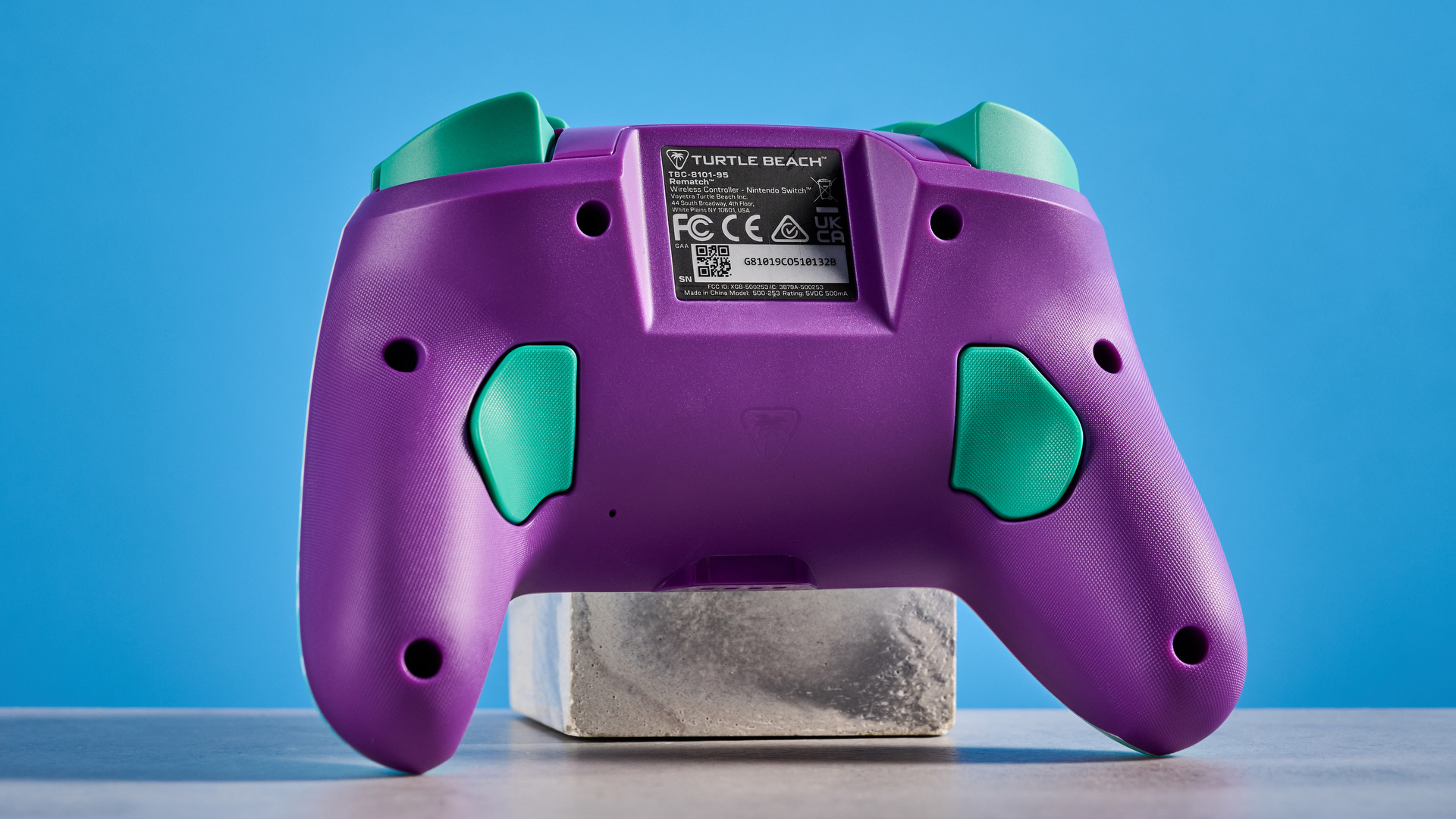
I found this extremely easy and quick to do. In Tears of the Kingdom, I remapped the right pedal to make Link sprint. This freed up my right thumb to control the camera while running, and trust me when I say it was extremely handy when running away from Gloom Hands as I could keep the rear pedal pressed and use the right thumbstick to keep track of the Gloom Hands’ position.
Using the rear buttons made the controller even more comfortable to use. My fingers didn’t feel as fatigued because I didn’t need to keep removing my thumbs from the sticks.
I also remapped the left rear button as the traditional Up arrow button, which, in Tears of the Kingdom, lets you attach an item to your arrow when your bow is drawn or aim an item to throw — and this worked like a charm. Using the rear buttons made the controller even more comfortable to use. My fingers didn’t feel as fatigued because I didn’t need to keep removing my thumbs from the sticks or use my index fingers at the same time.
In MotoGP 25, I mapped the left rear button to Gear Down and the right to Gear Up, and that made the game more immersive. I actually felt like I was the one riding the bike! The placement of my middle fingers on the rear pedals felt more natural, too. I now wish every controller came with rear pedals.
Long battery life
On top of everything, the Turtle Beach Rematch Wireless boasts fantastic battery life. Turtle Beach claims a single charge should last you up to 40 hours, which is the same as the Nintendo Switch 2 Pro controller. I used the Rematch Wireless to game for six hours and then left it running overnight (and at work) for a cumulative period of 24 hours. The battery had dipped to 45%, which is awesome.
The Rematch Wireless has other similarly priced controllers beat when it comes to battery life. The PB Tails Metal Crush Defender’s ($49) battery lasts just 10 hours, and the 8BitDo Ultimate Controller ($70) has a 22-hour battery life, making the Rematch Wireless the superior choice.
Turtle Beach Rematch Wireless review: The downs
I wish the Turtle Beach Rematch Wireless’ finishing was more refined and that it had some form of rumble or vibration. Also, you can get a more advanced Hall Effect controller for the same price.
Finishing could have been better
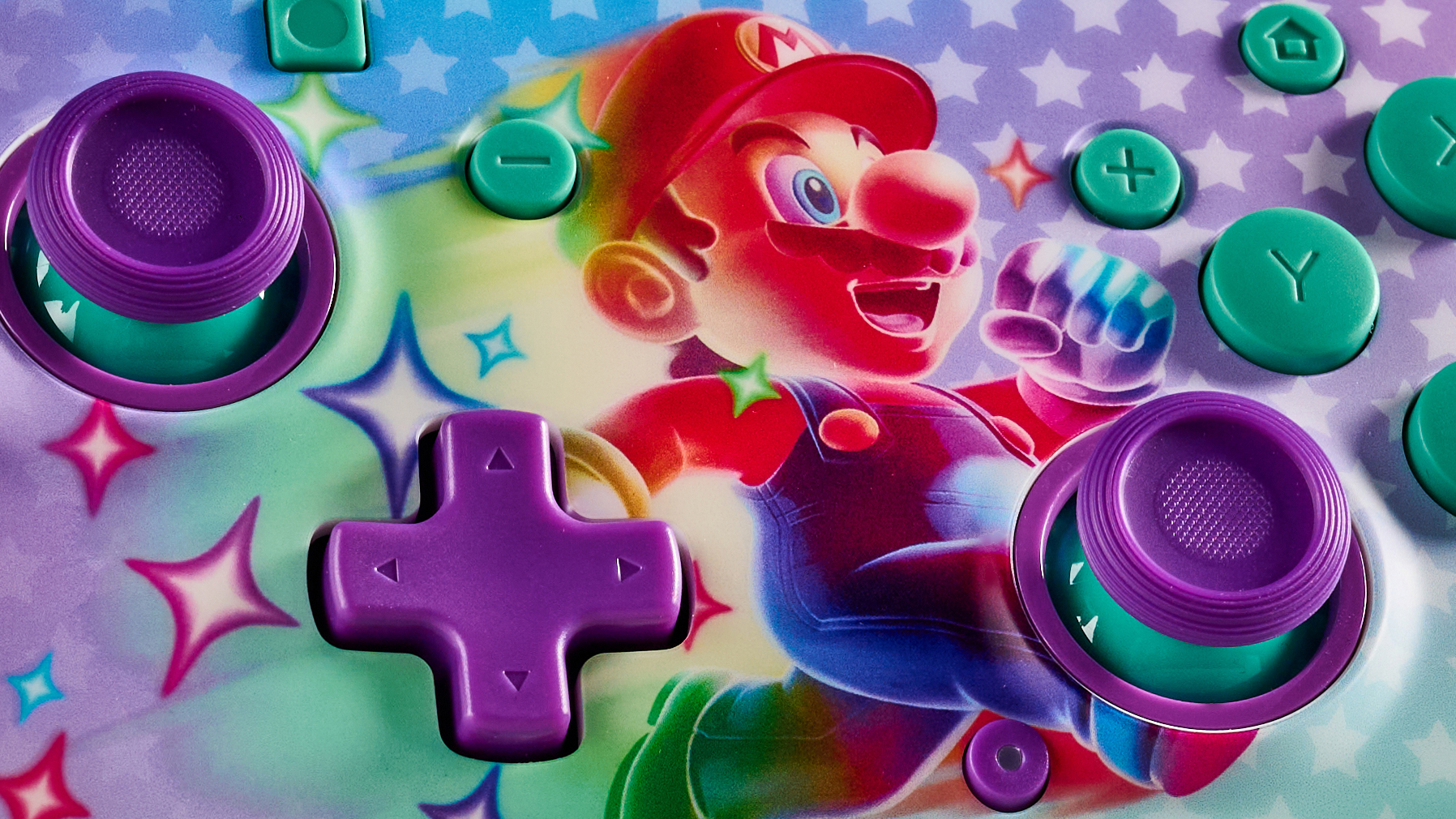
Like I mentioned up top, the Turtle Beach Rematch Wireless is available in the Invincible Mario and Super Mario Star colorways. While I really like the design, I wish the finishing were better and more refined.
The colorful Mario design on my test controller looks like it’s been stuck on like a sticker — and makes it look cheap. I know, I know, this is a cheap controller as it retails for just $59 / £49 at Amazon, but some other similarly priced controllers, like the GameSir Kaleid ($46), maintain a premium look while costing less than $50.
Hall Effect, anyone?

Hall Effect sensors in keyboards and gamepads have gained a lot of popularity of late, and many budget controllers now feature magnetic sticks and triggers for precise gameplay. They use magnets instead of physical contact (as analog sticks and triggers do), thereby negating wear and tear that eventually leads to stick drift — something most Switch players will be familiar with. Hall Effect sensors also read electromagnetic waves, enabling increased accuracy in gameplay.
The GameSir G7 SE ($44) and the GameSir Kaleid are priced similarly to the Turtle Beach Rematch Wireless, but with Hall Effect sensors instead of analog. However, they’re both wired-only.
The PB Tails Metal Crush Defender takes things a step further by introducing TMR sticks, which use weak electromagnetic waves rather than strong ones, which means that smaller adjustments and movements are picked up by the sensor. It’s worth investing in one of these controllers instead of the Rematch Wireless if you really want Hall Effect sensors.
No rumble
One thing I wish the Turtle Beach Rematch Wireless had was rumble or some form of haptic feedback. It feels like a missed opportunity because I really enjoy it when the Joy-Cons rumble in Mario Kart World or the modern-day Zelda games, as it makes games more immersive. But it’s also worth noting that, usually, third-party controllers don’t feature rumble, so this isn’t an isolated issue.
Turtle Beach Rematch Wireless review: Verdict
As someone whose OG Switch is now five years old and whose Joy-Cons have been heavily impacted by stick drift, I really enjoyed using and testing the Turtle Beach Rematch Wireless controller. For those who don’t want to spend nearly $90 on the official Nintendo Switch 2 Pro controller, it’s a great budget alternative.

The Rematch Wireless features extremely responsive analog thumbsticks and triggers, and comes with two back buttons that can be quickly remapped on the fly, and they make games more immersive. They also contribute to the controller’s ergonomics, and boy, is this a comfy gamepad.
I also like the Mario-themed design, but I wish the finishing was more refined. Also, if you want more precise control, it’s worth investing in a Hall Effect controller instead, like the GameSir G7 SE or the GameSir Kaleid — both of which are priced similarly to the Rematch Wireless. I also wish the controller had rumble or some vibration to it.
All in all, though, the Rematch Wireless is a fantastic controller that fits well into your existing Nintendo ecosystem. For a controller that costs less than your average weekly shop, it’s a stunner.

Nikita is a Senior Writer on the Reviews team at Tom's Guide. She's a lifelong gaming and photography enthusiast, always on the lookout for the latest tech. Having worked as a Sub Editor and Writer for Canon EMEA, she has interviewed photographers from all over the world and working in different genres. When she’s not working, Nikita can usually be found sinking hours into RPGs on her PS5, flying a drone (she's a licensed drone pilot), at a concert, or watching F1. Her work has appeared in several publications including Motor Sport Magazine, NME, Marriott Bonvoy, The Independent, and Metro. You can follow her photography account on Instagram here.
You must confirm your public display name before commenting
Please logout and then login again, you will then be prompted to enter your display name.

